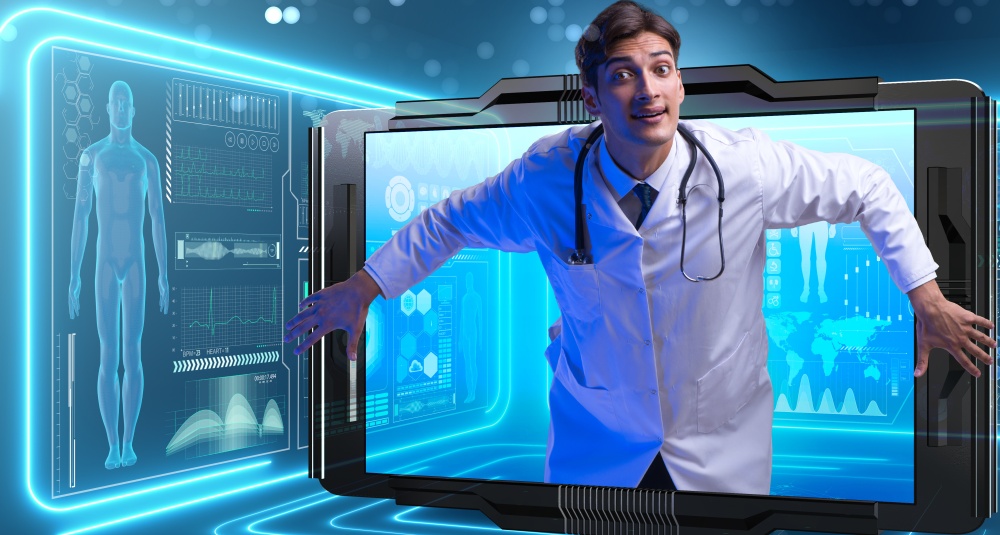
The U.S. healthcare system was already full of inefficiency, compounded by a growing shortage of medical professionals. Yet, regulatory obstacles continued to prevent the widespread adoption of connected health solutions that could increase accesses to healthcare services and allow healthcare providers to function more efficiently. No doubt, telehealth use is increasing, but slowly. That is, until COVID-19 struck, and infected more than 5.6 million people across the globe.
Since early March, many providers and emergency services organizations have been able to implement telehealth solutions to more effectively and rapidly respond to not only COVID-19 patients, but other patients as well. Chronic disease patients, for instance, are able to be observed using remote patient monitoring technologies, leveraging connected devices or manual readings that can then be sent or read to physicians.
Just a few of the coronavirus-related use cases that have emerged during the pandemic include:
- In Virginia, EMS personnel are connecting with healthcare professionals for immediate patient evaluations and suggested courses of action, including home treatment and isolation, or hospital admission.
- The Los Angeles Fire Department launched a telehealth program, where low-acuity 911 callers can be given appropriate treatment advice by connecting them with specially trained medical professionals.
- A Colorado-based healthcare provider had its entire network of more than 700 clinics activate telehealth programs within a three-day span. It is now offering virtual visits with PCPs and specialists, as well as urgent virtual care for COVID-19 issues. The system has seen virtual visits increase from 20 per day to more than 200 a day in the past month.
- In South Carolina, several healthcare systems are conducting free virtual coronavirus screening for anyone exhibiting symptoms.
- The state of Illinois has launched a remote patient monitoring program in response to the increase in confirmed and potential coronavirus cases. The program enables Pandemic Health Workers to use connected health applications and devices to monitor symptomatic patients who don’t require hospital admission, as well as high-risk individuals. The program also includes the launch of a mental health support line to help residents cope with high levels of anxiety and stress.
- Maryland’s governor has temporarily approved the use of video, audio, and asynchronous telehealth platforms to expand providers’ ability to manage COVID-19 patients while following safety protocols.
- Texas Health and Human Services launched a hotline to provide mental health support for state residents experiencing anxiety, stress, or other emotional issues during the pandemic.
Perhaps the biggest driver has been the relaxing of regulations around telehealth by government agencies, at least temporarily eliminating obstacles that have impeded the growth of telehealth thus far. HHS has made telehealth more accessible by loosening privacy requirements related to HIPAA compliance, allowing broader use of consumer devices and apps for doctor-patient communication. CMS has lifted location requirements to enable physicians to treat both new and existing patients in their homes, whether they had a prior in-person visit or not. It also has allowed treatment across state borders (assuming state approval of the same concessions), to make it easier for patients to access care, and for busy providers in COVID-19 hotspots to seek assistance from other providers.
Analyst firm Frost & Sullivan recognizes the value connected health represents as a tool against COVID-19. It also sees contactless monitoring systems and telehealth applications, combined with artificial intelligence as the future of healthcare and a significant opportunity for providers.
“The healthcare industry is shifting its focus to value-based, patient-centric remote monitoring solutions, providing a fillip to the research of non-contact monitoring technologies. Non-contact technologies are unobtrusive, cost-effective, and can be used to monitor multiple users, making them an effective solution for monitoring patients en masse.”
Ashish Kaul, Technical Insights Senior Research Analyst, Frost & Sullivan
Some of the areas of opportunity for connected health, according to the firm, include:
- Sound analysis technology for remote monitoring of influenza-like illness (ILI) patients based on their cough.
- Video-based, non-contact monitoring technology that can diagnose mental stress by detecting physiological and emotional signs such as depression, anger, and restlessness.
- Radar sensor technology that can track respiration and heart rate for symptoms of respiratory diseases such as asthma, COPD, and COVID-19.
- Non-contact, sensor-based technology that can track heart rate, respiration rate, and blood pressure for individuals interested in health and fitness.
- The telehealth market, which will experience a significant increase due to mobile platform technology.
There’s little doubt telehealth us helping serve a surge of patients during this pandemic – a surge that will continue to mount as non-essential treatments and procedures that have been postponed are scheduled. The evidence supporting the need for the expansion of connected health services is growing, as providers and patients alike are seeing the benefits. The question is, how will regulators handle the situation once the national health crisis subsides?
Edited by
Erik Linask